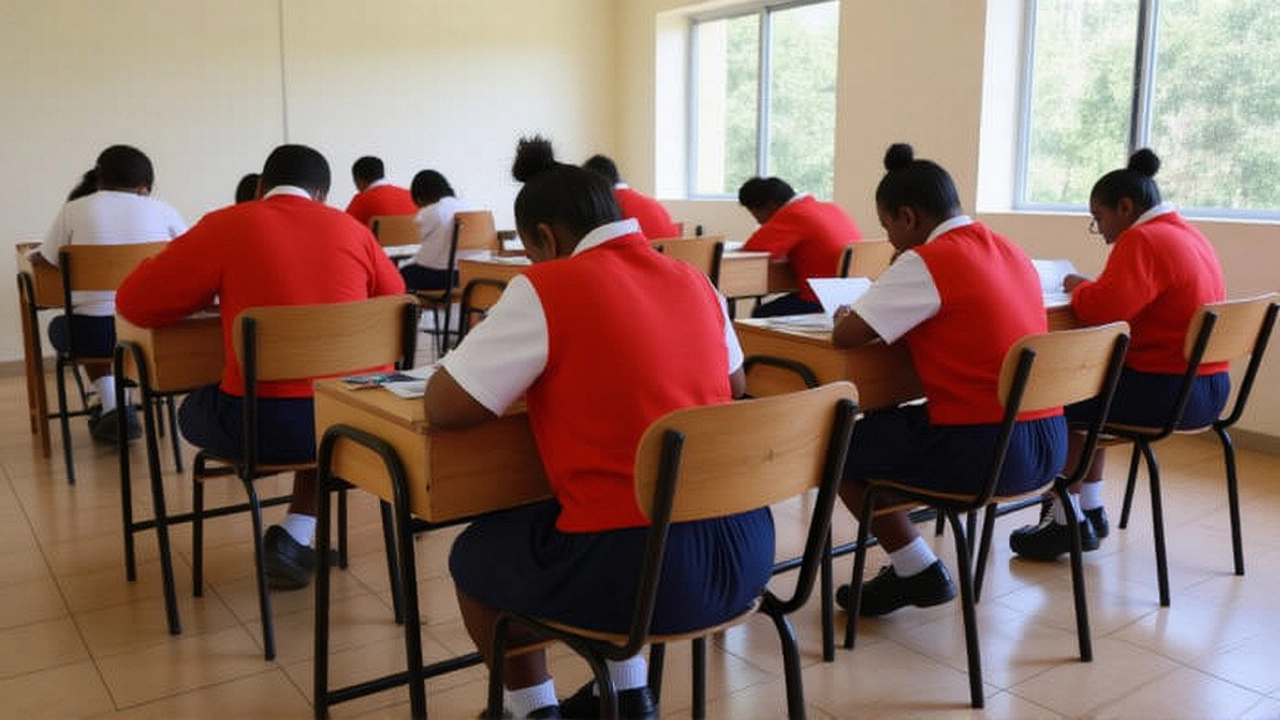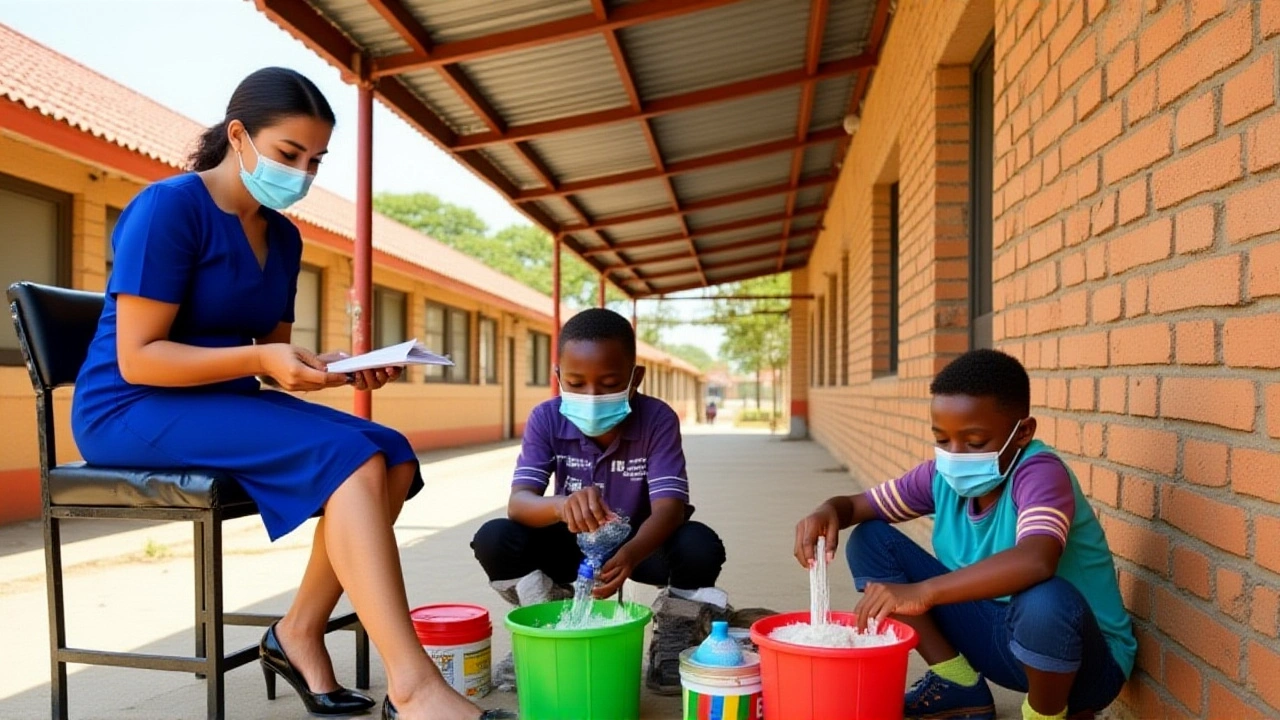When KNEC (Kenya National Examinations Council) announced a hard‑stop for uploading Grade 4 and Grade 5 School Based Assessment (SBA) project scores, every primary school from Mombasa to Maasai Mara felt the ripple.
The directive, sent out in a circular dated 21 January 2025Kenya, gives schools until 31 May 2025 to upload their results to the Competency Based Assessment (CBA) portal. The deadline targets the performance tasks—projects and practicals—downloaded from the portal in March 2025 for Grades 4 and 5.
Why the May 31 Cut‑off Matters
The SBA projects are a cornerstone of Kenya’s Competency‑Based Curriculum (CBC). They assess real‑world skills in three streams: Science & Technology, Creative Arts & Sports, and Agriculture & Nutrition. By requiring scores before the end of the second term, KNEC hopes to feed timely data into national benchmarking and reduce the administrative backlog that plagued the 2023 cycle.
“We need reliable, up‑to‑date evidence to calibrate the CBC rollout,” said Grace Njoroge, Director of Assessment Services at KNEC. “The May deadline ensures schools have enough breathing room to conduct the projects, score them according to the rubric, and upload the data without jeopardising the next assessment window.”
How Schools Are Supposed to Submit Scores
Step 1: Download the project guidelines and scoring rubrics from the CBA portal (available since 1 March 2025). Step 2: Administer the practical tasks using locally sourced materials—teachers are urged to improvise with items like recycled containers, garden produce, or classroom scraps to keep costs under KSh 500 per class.
Step 3: Record each learner’s performance on the standardized Excel template provided. Step 4: Upload the completed spreadsheet to the portal before the midnight deadline on 31 May. Schools that miss the cut‑off face a KSh 500 fine per late submission, a penalty first applied to the Kenya Junior School Education Assessment (KJSEA) scores.
In a recent survey of 120 primary schools in Central Province, 68 % reported having uploaded all scores two weeks early, while the remaining 32 % are still collating evidence from remote classrooms.
Penalties and Financial Implications
KNEC’s fine structure mirrors the 2024 policy that imposed a KSh 300 fee for late Grade 3 Integrated Learning Assessment (ILA) submissions. The current KSh 500 penalty for tardy KJSEA project scores serves as a deterrent, but some headteachers argue it may strain budgets already stretched by COVID‑era inflation.
“Our school operates on a modest PTA fund; an extra KSh 500 per class adds up quickly,” lamented Samuel Otieno, headteacher of Kijiji Primary School in Kilifi County. “That’s why the directive to use ‘improvised’ materials is a lifesaver.”

Broader Timeline: What Comes After May 31?
May 31 is just one waypoint in KNEC’s dense 2025 CBC calendar. The next milestones are:
- 30 July 2025 – upload scores for Grades 3, 7, and 8 SBA projects.
- 30 August 2025 – final submissions for KJSEA candidates (Grade 9).
- 23 October 2025 – deadline for term‑three written SBA tests across all applicable grades.
Notably, Grade 6 and Grade 9 pupils sit for national summative exams—KPSEA and KJSEA respectively—so they are exempt from the term‑three SBA written tests. This staggered approach aims to balance continuous assessment with high‑stakes examinations.
What This Means for Kenya’s Education Landscape
By tightening the upload schedule, KNEC hopes to generate more reliable data for policy‑makers, curriculum developers, and donor agencies tracking CBC outcomes. Consistent, timely scores also help schools pinpoint learning gaps early, allowing remedial programmes to be rolled out before the next academic year.
Experts say the push for locally sourced project materials could spark a wave of low‑cost innovation in classroom teaching. “When teachers are forced to think creatively about resources, students benefit from authentic problem‑solving experiences,” noted Dr. Amina Yusuf, Education Research Fellow at University of Nairobi.
Frequently Asked Questions
What happens if a school misses the 31 May deadline?
KNEC will levy a KSh 500 fine per late submission for each affected class. Repeated offenses could trigger additional administrative reviews and may affect the school’s eligibility for certain government subsidies.
Are schools required to keep physical evidence of the projects?
Yes. The January 21 2025 circular instructs headteachers to retain all project artefacts, photos, and scoring sheets for at least two years. These records may be requested during KNEC audits or verification visits.
How are materials sourced for the projects?
KNEC advises teachers to use items readily available in the school’s immediate environment—e.g., recycled plastic bottles for science experiments, locally grown vegetables for nutrition tasks, and simple sports equipment made from rope or wood. This minimizes added costs and promotes sustainability.
What are the next major assessment dates after May 31?
Schools must upload Grade 3, 7, and 8 SBA project scores by 30 July 2025, and KJSEA (Grade 9) scores by 30 August 2025. The final written SBA tests for term three must be uploaded by 23 October 2025.
Why is the CBC framework emphasizing practical projects?
The CBC aims to develop 21st‑century competencies—critical thinking, creativity, and collaboration. Practical projects let learners apply concepts in real contexts, giving teachers richer evidence of mastery than traditional pen‑and‑paper tests alone.

Brandon Rosso
October 6, 2025 AT 21:30The introduction of a firm May 31 deadline offers schools a clear target for project score submissions, which should streamline the data collection process across the country. By setting a uniform cut‑off, KNEC can more effectively synchronize the subsequent assessment phases and reduce administrative lag. This approach also gives teachers a predictable timeline to plan and execute practical activities while maintaining curriculum continuity. It is encouraging to see policy designed with both accountability and feasibility in mind.
Tracee Dunblazier
October 7, 2025 AT 17:06Honestly, the new deadline feels like another bureaucratic hoop for schools already juggling limited resources. While the intention to standardize data is understandable, it may ignore the reality of remote classrooms that still lack internet access. The penalty could end up punishing the very educators we need to support.
Edward Garza
October 8, 2025 AT 12:50The fine is absurd and will cripple underfunded schools.
Allen Rodi
October 9, 2025 AT 08:33Schools can meet the May 31 requirement by first downloading the rubric from the CBA portal and then organizing materials that are readily available locally. Teachers might repurpose plastic bottles for science experiments or use garden produce for nutrition tasks, keeping costs minimal. Recording results in the prescribed Excel template ensures consistency across districts. Once the spreadsheet is completed, uploading before the midnight deadline will avoid the KSh 500 fine.
Jody Webster
October 10, 2025 AT 04:16But wait!!!-why are we suddenly obsessed with deadlines???!!! Is this really about data integrity???!!? Or is it just another top‑down mandate that ignores on‑the‑ground realities???!!!! Schools already struggling with supply chains-are they expected to improvise!!!?? I think the whole thing is… over‑hyped…!!!
Steve Goodger
October 11, 2025 AT 00:00I appreciate the practical suggestions you offered for sourcing low‑cost materials, and I would like to expand on how this strategy can be embedded into the broader teaching philosophy. When teachers view improvisation not merely as a stop‑gap but as a pedagogical strength, they empower students to think critically about resourcefulness. For example, using recycled containers for water filtration experiments can segue into discussions about sustainability and local ecosystems. Similarly, cultivating a small vegetable patch within the school compound provides authentic contexts for nutrition lessons while reinforcing community engagement. These activities, when documented thoroughly, create a rich portfolio of evidence that aligns with KNEC’s competency‑based objectives. Moreover, the requirement to retain physical artefacts for two years encourages schools to develop systematic archiving practices. Such practices can be supported by simple digital inventories that log photographs, scoring sheets, and reflective teacher notes. By integrating these inventories into routine administrative tasks, the workload associated with the May 31 deadline becomes more manageable. It is also worth noting that the KSh 500 fine, while modest, can be mitigated if schools collaborate regionally to share best‑practice templates. Peer‑learning circles among headteachers can exchange successful Excel models and troubleshooting tips, reducing duplication of effort. In districts where internet connectivity is intermittent, offline data collection followed by batch uploads on reliable days can prevent missed deadlines. Additionally, parental involvement-through volunteer assistance in material collection-can further alleviate cost pressures on the PTA budget. This communal approach not only addresses the financial concerns you highlighted but also strengthens the school’s social capital. From a policy perspective, timely data submission enables KNEC to produce more accurate national benchmarks, which in turn informs curriculum revisions. Ultimately, the synergy between localized improvisation and systematic data management creates a resilient assessment ecosystem. I encourage all stakeholders to view the May 31 cut‑off as an opportunity to showcase Kenyan ingenuity rather than a punitive obstacle.
johnson ndiritu
October 11, 2025 AT 19:43🚨 Another deadline, another fine line for schools walking a financial tightrope. 📉 This policy pretends to be supportive, yet it burdens teachers with extra paperwork and a penalty that feels more like a tax. 😒 If we truly care about education, we should invest in resources, not in late‑submission fees.
sheri macbeth
October 12, 2025 AT 15:26Oh sure, the Ministry’s “initiative” is just a clever ploy to push us into a surveillance state of project data. 🙄 They’ll probably use the uploads to rank schools and decide who gets future funding. Classic bureaucratic magic.
Lane Herron
October 13, 2025 AT 11:10The implementation vector of this deadline paradigm embodies a systemic inflection point, engendering a cascade of operational realignments across pedagogical matrices. Such a shift precipitates a reconfiguration of stakeholder epistemologies, demanding hyper‑adaptive curricular scaffolding.
Henry Cohen
October 14, 2025 AT 06:53but the real problem is the data pipeline is already clogged and adding more checkpoints just makes it worse its a bottleneck no one talked about
Mark Langdon
October 15, 2025 AT 02:36I hear the frustration about the fine, and I understand how it can feel like a punishment, but we need to recognize that accountability drives improvement. Schools that meet the deadline demonstrate commitment to their students, and that should be celebrated rather than condemned.
Ciara Russell-Baker
October 15, 2025 AT 22:20yeah but its kinda hard to stay positive when the budget is tight and the fine hits hard lol
Aaron Samarita
October 16, 2025 AT 18:03Your terse observation strips away the nuance of a policy that, while imperfect, aims to harmonize national assessment standards. Yet you reduce it to a simplistic bottleneck, ignoring the strategic foresight behind staggered submissions.